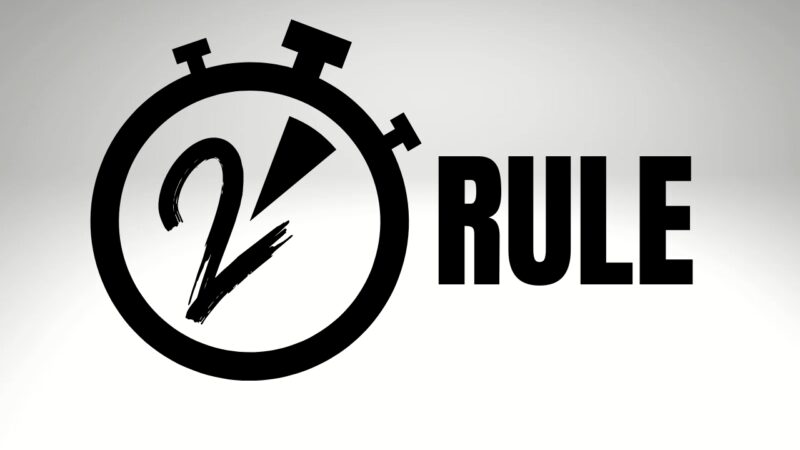We all know that effective employee time management is crucial for keeping the wheels of productivity turning, yet somehow, the most basic principles tend to get buried under a mountain of Slack notifications, endless meetings, and the siren call of yet another “urgent” email.
So, let’s cut through the corporate jargon and get real about how to actually manage time without losing your sanity.
1. Set Clear Goals and Priorities
First up, let’s talk about goals. Yeah, those things you scribble on a Post-it note and promptly forget about. Here’s the deal: if your employees don’t have clear goals, they’re going to spend their time doing whatever makes them look busy (and trust me, “looking busy” is a full-time job).
Setting clear goals isn’t just about ticking boxes—it’s about aligning tasks with what actually matters to the company. Imagine that! SMART goals (Specific, Measurable, Achievable, Relevant, and Time-bound) are a popular way to give everyone a roadmap, but only if those goals don’t vanish into the abyss of corporate initiatives.
Pro Tip
Get your team to prioritize their tasks based on the company’s actual needs, not just what looks good in a weekly report. Shockingly, this might mean letting go of those pointless tasks that don’t move the needle.
To avoid wasting time on pointless tasks that don’t pay the bills, use a payroll calculator to ensure your team’s efforts align with what really matters.
2. Utilize Time Management Tools

We’ve all been there—downloading the latest time management tool that promises to revolutionize how we work, only to abandon it two weeks later.
While tools like Asana, Trello, and Clockify can be game-changers, they won’t magically organize your life for you. Let’s be honest: without the discipline to actually use them, they’re just another item on your desktop collecting digital dust.
The real benefit of these tools is that they can help break down overwhelming projects into manageable chunks and track how much time is being wasted—I mean, spent—on each task. But if your team is spending more time updating the task list than actually completing the tasks, it’s time to rethink your approach.
Pro Tip
Choose tools that fit your team’s workflow rather than forcing your team to fit the tool. And for the love of all that’s holy, keep the tool usage simple. No one has time to learn a new software interface every month.
3. Encourage Time Blocking and Scheduling
Ah, multitasking—the ultimate lie we tell ourselves when we want to feel productive. Newsflash: multitasking is just a fancy word for “doing everything poorly at once.”
Time blocking, on the other hand, is where the magic happens. It’s about carving out specific chunks of time to focus on one task at a time, which means fewer distractions and better results.
How to Time Block Like a Pro
- Identify key tasks: Seriously, figure out what actually needs to get done.
- Estimate time: Be realistic—your optimistic outlook isn’t going to change the fact that writing a report takes longer than 15 minutes.
- Block time: Set aside uninterrupted time to focus on each task.
- Minimize interruptions: Politely (or not) inform your coworkers that you’re in focus mode and will not be available to discuss their latest Netflix obsession.
Don’t forget to include breaks—because nothing screams “I’m burned out” like working for eight hours straight without even a coffee refill.
4. Promote Effective Delegation
Delegation is the ultimate form of self-care for managers. Yet, so many still cling to the belief that if you want something done right, you’ve got to do it yourself. Wrong.
Effective delegation isn’t about dumping your least favorite tasks onto someone else—it’s about assigning the right tasks to the right people.
How to Delegate Without Losing Your Mind
- Know your team’s strengths: Please, don’t hand the tech project to the guy who still uses Internet Explorer.
- Communicate clearly: Vague instructions are the enemy of efficiency. Be specific about what needs to be done and by when.
- Provide support, but don’t hover: Offer guidance when needed, but avoid the urge to micromanage.
- Follow up: Check in on progress without breathing down anyone’s neck. It’s a fine line, but you’ll get the hang of it.
Remember, delegation isn’t about offloading work—it’s about ensuring tasks are handled by those best suited to them.
Do it right, and you’ll have more time to focus on the big picture (or, let’s be real, catch up on your own work).

5. Limit Meetings and Improve Their Efficiency
Let’s talk about the elephant in the conference room: meetings. We all know they’re often the biggest waste of time, yet somehow they keep multiplying.
If you want to save everyone’s sanity (and time), it’s time to slash the number of meetings and make the ones that do happen actually worth attending.
Meeting Survival Guide
- Set an agenda: If there’s no agenda, there’s no meeting. End of story.
- Limit attendees: Only invite people who actually need to be there. Everyone else can read the minutes (if they care).
- Stick to the schedule: Respect everyone’s time by starting and ending on time.
- Keep it focused: Stay on topic. Tangents are for podcasts, not meetings.
- Follow up with action items: Summarize what was decided and who’s doing what, so the meeting wasn’t just a chat fest.
By trimming the fat from your meeting schedule, you’ll free up more time for actual work. And maybe—just maybe—people will stop dreading their calendars.
6. Implement the Two-Minute Rule

You know those tiny tasks that seem insignificant but somehow take over your entire day? Enter the Two-Minute Rule: if something takes less than two minutes, do it now. It’s a simple concept, but one that can dramatically reduce the clutter in your to-do list.
The beauty of this rule is that it prevents small tasks from piling up into a monstrous to-do list that you’ll inevitably avoid. Instead, you get them out of the way quickly and move on to the more substantial work.
Quick Tip
If a task takes longer than two minutes, either schedule it for later or delegate it. The goal here is to keep your workflow as clean and efficient as possible.
Summary
Time management isn’t just a buzzword; it’s the backbone of productivity. By setting clear goals, using the right tools, focusing on what matters, and promoting a healthy work-life balance, you can help your team make the most of their time.
It’s not about squeezing every last drop of productivity out of your employees; it’s about helping them work smarter, not harder. Because, at the end of the day, time is the most valuable resource we have—so let’s not waste it.








